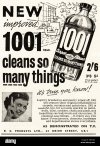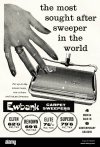Robert Ensor (bob)
master brummie
Do you mean the office tower by Snowhill Station ?.Back in my apprenticeship days , while The Birmingham Post and Mail was being built . A sparks I worked with said he was going to get a yankee car , he turned up one Thursday morning in a sky blue Chevrolet Impala with a bot of white on the fins . We used to get paidon a Thursday but had to go to the office on Holloway Head , I can remember from Paradise St onwards to the office bouncing around all over the shop , me hoping it would soon end , the sparks sitting there driving with a broad grin on his face , I didn't know what to say when I got out whether it should be 10-4 or alternatively book em Danno .
I cant recall the name of the big island there now, but there use to be a hamburger stand right there we would go to and hang out late at night with guys that had custom cars etc.
i worked with a fellow whose pop owned it so we ate free, they lived in Wythall.



